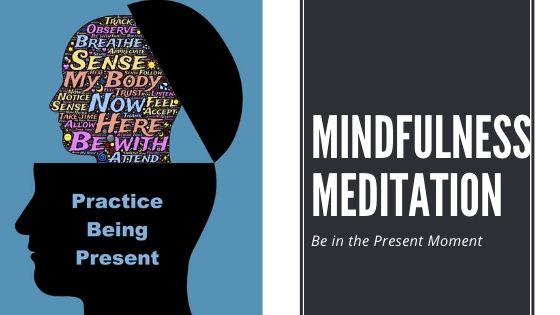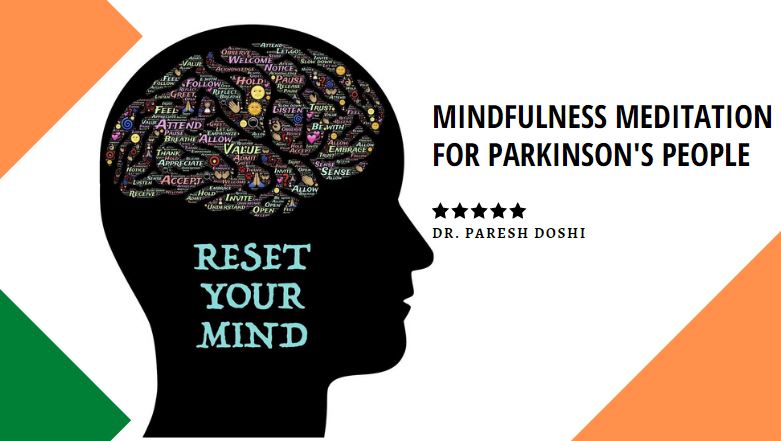Mindfulness Meditation for Parkinson's Disease
Mindfulness meditation is a supportive therapy that can help you manage Parkinson’s patient’s non-motor symptoms. It can also play a vital role in helping you adjust to living with long-term conditions. Parkinson’s disease is a progressive chronic disease consisting of non-motor and motor symptoms.
PD people may be faced with and often get worsen motor symptoms, such as tremors and freezing of gait in stressful situations.
Not only motor symptoms but also PD people may experience non-motor symptoms such as depression and anxiety.

Benefits of Meditation
The benefit of meditation is so powerful for anyone, especially when it comes to Parkinson’s patients, undoubtedly they should get optimal benefits from meditation in Parkinson’s disease.
Meditation can boost your feelings of control and resilience, reduce anxiety and depression, and improve sleep, most importantly increase grey matter in the brain.
When you will achieve a state of relaxation, which you can be successes through mindfulness, you can obtain the benefits, including:
- Higher excellent brain functioning.
- It will Increase immune function;
- Lowered blood pressure and heart rate
- It Increases awareness, attention, and focus.
- It is super to Increase clarity in thinking and perception.
- It will lower anxiety levels.
- Experience of being calm and internally still
- You can experience feeling connected.
Let's understand the symptoms of stress, including:
- Continuously feeling anxious and worried.
- Getting irritation and feeling annoyed.
- Argumentative and defensive with friends and family.
- Restless sleeping and of course restless mind.
- Low levels of energy, often waking up feeling tired.
- Often self-critical and/or critical of others;
- Feeling flat and uninspired, not at all positive.
- Having difficulty concentrating on any subject.
- Clenching your jaw muscles and grinding your teeth at night.
- Headaches and migraines.
How to do Mindfulness Meditation
What do you understand about mindfulness?
Mindfulness is just the basic ability to be completely present mind, aware of where we are and what are we doing, not overly reactive or overwhelmed by what’s going on around us.
Take your seat. You can sit on—a chair, a meditation cushion, a park bench. Find a place that gives you a stable, makes you feel comfortable, not perching or hanging back.
Observer If you are on a cushion on the floor, cross your legs comfortably in front of you. If you do some kind of seated yoga posture, go ahead. If on a chair, it’s good if the bottoms of your feet are touching the floor.
Straighten—but don’t stiffen—your upper body. The spine has natural curvature. Let it be there. Your head and shoulders can comfortably rest on top of your vertebrae.
Situate your upper arms parallel to your upper body. Then let your hands drop onto the tops of your legs. With your upper arms at your sides, your hands will land in the right spot. Too far forward will make you hunch. Too far back will make you stiff. You’re tuning the strings of your body—not too tight and not too loose.
Drop your chin a little and let your gaze fall gently downward. You may let your eyelids lower. If you feel the need, you may lower them completely, but it’s not necessary to close your eyes when meditating. You can simply let what appears before your eyes be there without focusing on it.
Be there for a few moments. Relax. Bring your attention to your breath or the sensations in your body.
Feel your breath—or some say “follow” it—as it goes out and as it goes in. (Some versions of this practice put more emphasis on the out-breath, and for the in-breath, you simply leave a spacious pause.)
Either way, draw your attention to the physical sensation of breathing: the air moving through your nose or mouth, the rising and falling of your belly, or your chest. Choose your focal point, and with each breath, you can mentally note “breathing in” and “breathing out.”
Inevitably, your attention will leave the breath and wander to other places. Don’t worry. There’s no need to block or eliminate thinking. When you get around to noticing your mind wandering—in a few seconds, a minute, five minutes—just gently return your attention to the breath.
Practice pausing before making any physical adjustments, such as moving your body or scratching an itch. With intention, shift at a moment you choose, allowing space between what you experience and what you choose to do.
You may find your mind wandering constantly—that’s normal, too. Instead of wrestling with or engaging with those thoughts as much, practice observing without needing to react. Just sit and pay attention. As hard as it is to maintain, that’s all there is. Come back over and over again without judgment or expectation.
When you’re ready, gently lift your gaze (if your eyes are closed, open them). Take a moment and notice any sounds in the environment.
Notice how your body feels right now. Notice your thoughts and emotions. Pausing for a moment, decide how you’d like to continue on with your day.






